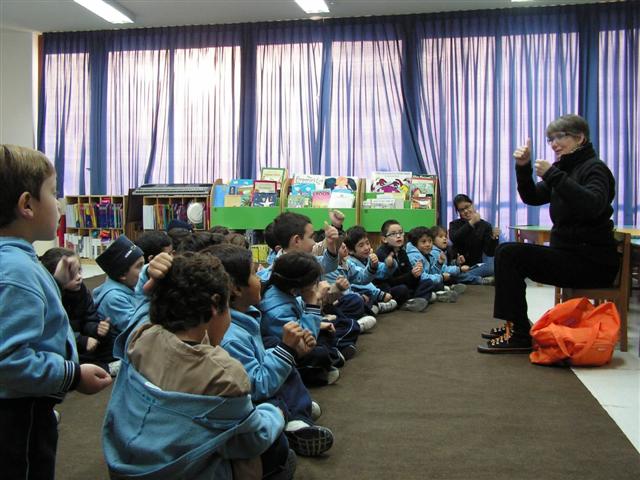Linking storytelling and Common Core State Standards
/If you read my newsletter, you'll remember that in the last issue, I started to write a long and tedious article about storytelling and Common Core State Standards. Bored out of my gourd, I erased it and wrote something different. My friend Jane Crouse suggested I rewrite that first article for the Youth, Educators and Storytellers Alliance (YES), with help from my puppet Trixie Decaphobia. I decided the article wasn't so bad after all, so here it is:
Remember New Math? Open Classrooms? Whole Language? No Child Left Behind? Ideas on the perfect way to educate children go in and out of fashion. [My puppet Trixie has just burst into song,Everything old is new again, complete with high kicks.]
Right now it’s the Common Core State Standards Initiative (CCSS), which as I see it, is an attempt to teach flexibly and yet consistently. [Trixie wanted to show off her flexibility, so she put her foot behind her ear. Not bad for a 111-year-old.]
Whether you like CCSS or not, it has been adopted by many states, so it serves us as storytellers to see where we can make connections with our artform. Fortunately, that's easy. Here are a few to give you the flavor of the standards. Check out the CCSS website for the full set. [Trixie wants to know if I’ll let her go on the Internet unsupervised. Ummm…]
Let’s start with a couple of obvious connections (by no means the only ones) in the CCSS for Reading: Literature for first graders (6 year olds):
CCSS.ELA-LITERACY.RL.1.2
Retell stories, including key details, and demonstrate understanding of their central message or lesson.
CCSS.ELA-LITERACY.RL.1.3
Describe characters, settings, and major events in a story, using key details.
Isn’t that what we encourage kids to do after we tell stories. Even without encouragement, they often do it spontaneously. When I tell The ghost with the one black eye, for example, children often say afterwards, “That baby sure was brave!” and teachers tell me that the kids retell and act out the story on the playground. [I hope they don’t imitate Trixie brushing her hair with her toothbrush.]
Here are another couple of standards for Reading: Literature, for fifth graders (ten year olds), appropriately more complex:
CCSS.ELA-LITERACY.RL.5.2
Determine a theme of a story, drama, or poem from details in the text, including how characters in a story or drama respond to challenges or how the speaker in a poem reflects upon a topic; summarize the text.
CCSS.ELA-LITERACY.RL.5.3
Compare and contrast two or more characters, settings, or events in a story or drama, drawing on specific details in the text (e.g., how characters interact).
Oh, yes, those are great activities for older kids to do after the stories. [Trixie says they’re more fun to do than it sounds in the CCSS.]
In the CCSS strand for Speaking and Listening, third graders (eight year olds), this one fits perfectly, especially when we’re encouraging kids to be storytellers:
CCSS.ELA-LITERACY.SL.3.4
Report on a topic or text, tell a story, or recount an experience with appropriate facts and relevant, descriptive details, speaking clearly at an understandable pace.
CCSS isn’t just for young children either. [Trixie adds helpfully that it’s for 111-year-olds as well.] It goes all the way through the curriculum from kindergarten to twelfth grade. As I mentioned in a blog post about writing with kids recently,
From third grade through high school, the Common Core State Standards ask students to write narratives to develop real or imagined experiences or events using effective technique, descriptive details, and clear event sequences.
Yes, indeedy, that's what I do when I teach writing. Story listening teaches the students these pre-reading and pre-writing skills by example, as well.
There are many more applications of CCSS. I highly recommend the article put together for YES by Lyn Ford, Jane Stenson, Joyce Geary and Sherry Norfolk, Storytelling and the Common Core Standards. [Trixie loved it, too. Now she wants to know if we can go get a snack.]











































































